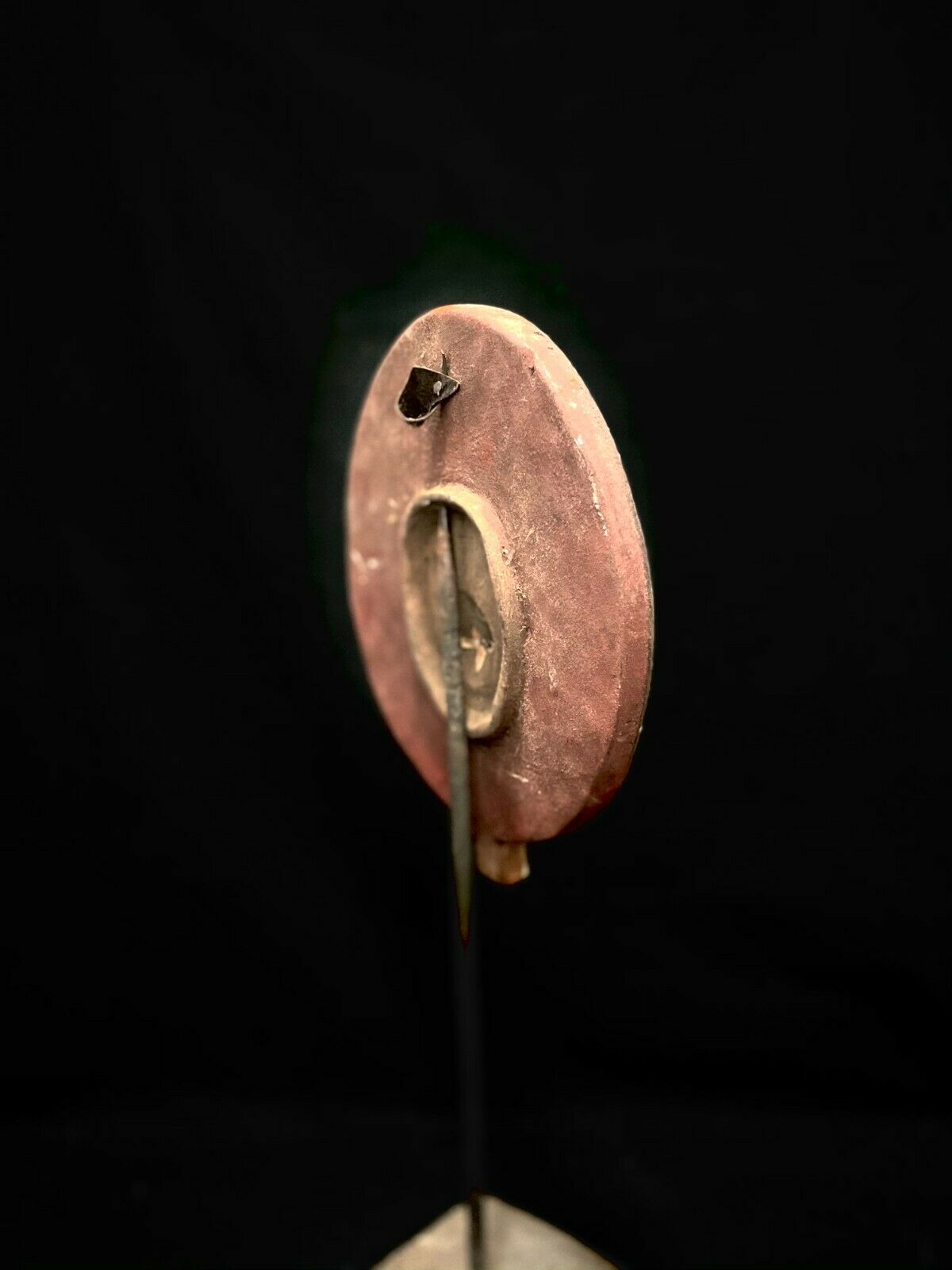-40%
African Mask Bobo Bwa Hawk Mask Burkina Faso (1479)
$ 63.3
- Description
- Size Guide
Description
Created withEselt
-
eBay Listing Designs
COLLECTION CENTER The African tribes
Created with
Eselt
-
eBay Listing Designs
Created with
Eselt
-
eBay Listing Designs
Bobo Bird Dance Mask Helmet Burkina Faso
DESCRIPTION
There are two major types of leaf masks worn by the followers of sibe. Sibe sowiye, made of the leaves of the néré, is very similar to the birewa sowiye for farmers. It is connected to the cult of Dwosa, and only appears at night. Dafuru combines a body made of the leaves of the néré, mahogany, and shea nut, with a head made of rattan. This mask, dedicated to Kwele Dwo, only participates in funerals.
Cloth masks, called wuru kore, are secular and dance at night. Their forms are limitless, and the performers, who are initiated, are totally free to choose the cloth, the shape of the costume, and the colors used. Each imitates a chosen subject, including individuals, scenes of daily life, and animals. All feeling and emotions are depicted, from violence to gentleness, with great emphasis on humor, which the audience always enjoys.
These masks are intended to entertain, but still possess a certain sacred character that is present in all masks.
Among wooden masks the most important types are sacred masks (molo and nwenke), escort masks (nyâga), and entertainment masks (bole). The sacred masks are representative, rather than representational masks, and do not represent any living, tangible being, human or animal. As a result, these masks are abstract and stylized. A mask with human features may have added to it forward-curving antelope horns and a great bird's beak because it represents a character of Dwo that does not take human or animal form. Similarly, animal shapes do not mean the mask represents an animal, but recall the spirit of an animal which saved the founding ancestor of the clan. Allegorical and nonrepresentational, the masks incarnate the spirit of Dwo, the son of Wuro. They have often been revealed in the form of miniature metal masks
Other masks, nyâga for example, are fairly naturalistic depictions. In the case of entertainment masks, the imagination of the artist is free to create innovative forms.
The two major types are the molo and nwenke. These are the most ancient and sacred of smiths' wooden masks, used in the cults of Kwele Dwo, Dwosa, and Sibe Dwo, forms of Dwo that were revealed in the ancient village of Kwele during the cosmogonic period, that is, after Wuro's withdrawal.
Molo masks are carved of the wood of the sacred tree, lingué (Afzelia africana). These masks have a long, rectangular or trapezoidal face. The head is a spherical helmet with a sagittal crest. Two thick, long horns project dramatically upward from the helmet, and there is no frontal plank above the face. A small handle of plaited fiber beneath the chin permits the masks to be held on the head during acrobatic performances. There are two major styles of molo masks: in the north, around Tanguna, the broad, flat planes of the face are divided vertically by a ridge that bears, in descending order, a short thick nose, a protruberant mouth placed high on the face of the mask, and an umbilicus. The eyes are rectangles. In contrast, the style of molo from Kurumani, in central Bobo country, has a very broad, square face with a long nose that divides the face vertically. The mouth is placed far down very near the chin, and is very broad and protruberant. The face is marked by slanting tribal scars (Le Moal 1980: 224, fig. 18).
The performer who wears the molo mask either wears a costume of the leaves of the tabe (Isoberlina doka) and is called sibe molo, or he is nude, and is called so molo. The wooden head of the mask is always the same--only the costume changes depending on the ceremonies in which it participates.
There is a third type of molo mask, the saxa molo. This is a rare, ritual mask, because it is now only used by a few lineages. The head is a slab of bark of the lingué. The costume is made up of leaves of the same tree.
SOLD WITHOUT THE STAND
SEND BY DHL
height- 25 CM
width- 23 CM
Created with
Eselt
-
eBay Listing Designs
Payment
Shipping
We ship all our products only via DHL fast shipping (7 days)
Created with
Eselt
-
eBay Listing Designs




















